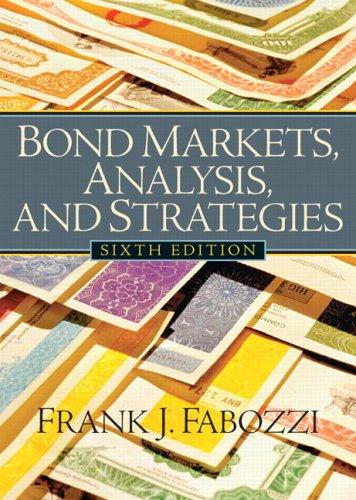Question
70) Two companies have very similar financial profiles: historical revenue growth rates of 10-15% and historical EBITDA margins of approximately 20%. The revenue and EBITDA
70)
Two companies have very similar financial profiles: historical revenue growth rates of 10-15% and historical EBITDA margins of approximately 20%. The revenue and EBITDA figures are also within 5-10% of each other, and they are in the same industry and sub-industry. However, one company is trading at an LTM EV / EBITDA multiple of 10x and the other company is trading at a 6x multiple. How could this happen? (May be multiple answers)
a) Even though the historical financials are similar, expectations for future revenue growth rates or future margins might be very different.
b) This outcome might be because of a cyclical industry downturn that is affecting one company, but not the other company.
c) One company might be using capital or capital expenditures far more efficiently than the other one, which is not reflected in metrics such as EBITDA since CapEx is excluded.
d) One company, or both companies, might be genuinely mispriced and misunderstood by the market.
e) This result happens most often when the investor base for one company is significantly different than the investor base for the other company.
71)
Whats the true purpose of valuing a company with a DCF, comparable public companies, and precedent transactions? (May be multiple answers)
a) If the company is your client, you might use this valuation to advise the Board of Directors on how much the company might be worth in a sale.
b) If you work at a hedge fund or asset management firm, you might value a company to determine whether or not you could make money by investing in it.
c) A valuation tells you what the company SHOULD be worth today.
d) A valuation tells you what the company IS worth today.
e) A valuation using those methodologies shows you how much a company could earn if it sells off all its assets.
82)
Which of the following steps do you complete when calculating the PURCHASE Enterprise Value for each M&A deal in a set of Precedent Transactions?
a) Always use the *offer price* to calculate the Purchase Equity Value first.
b) For the Balance Sheet data required for Enterprise Value, use the sellers latest Balance Sheet available as of the transaction close date.
c) Convert the value of stock into dollars or other currencies based on the buyers share price as of the announcement date.
d) For the Balance Sheet data required for Enterprise Value, use the sellers latest Balance Sheet available as of the transaction announcement date.
e) Account for earn-outs either by assuming a probability of payout or by taking an all or nothing approach for the deals with earn-outs.
f) f the sellers financial status or key metrics changed between the transaction announcement and the closing date, update the analysis to account for them.
Step by Step Solution
There are 3 Steps involved in it
Step: 1

Get Instant Access to Expert-Tailored Solutions
See step-by-step solutions with expert insights and AI powered tools for academic success
Step: 2

Step: 3

Ace Your Homework with AI
Get the answers you need in no time with our AI-driven, step-by-step assistance
Get Started


